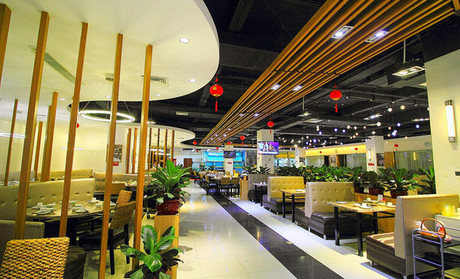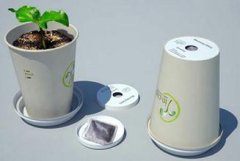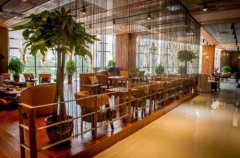An afternoon of coffee and dessert
Sit by the sunny window, enjoy a cup of tea, taste a dessert that moves your index finger, chat with your close friends, and spend the afternoon comfortably-this is not an impossible dream. Walking in the streets of Yiwu, you can see people sitting at the French window of a coffee shop drinking afternoon tea at any time, some from abroad, some from local. Different skin color, but comfortable is the same.

English afternoon tea goes to the bone
The concept of afternoon tea can be traced back to the 17th century in England. At that time, British upper-class society had a rich breakfast and a relatively simple lunch, while the social dinner did not begin until around 8pm, and people were used to having a snack and a cup of tea around 4pm. One of the countesses, Anna Maria, who knows how to enjoy life, sends a maid to prepare a pot of black tea and some snacks for her every afternoon to invite friends to share. Soon, afternoon tea quickly became popular in the upper class of England. This habit continues to this day, and has gradually evolved into a leisure habit of modern people. At first, afternoon tea was only enjoyed by the British aristocracy, and then gradually evolved into a social tea party for friends, which gave rise to various etiquette, but now the form has been simplified a lot. Although afternoon tea has been simplified now, the choice of tea, the preparation of tea sets and rich refreshments are still the three bright spots of afternoon tea.
Afternoon tea was once regarded as an introduction to high society and a symbol of fashion. Britain's favorite afternoon tea time is between 3pm and 05:30. When enjoying afternoon tea, they like to choose the best black tea, served with Chinese porcelain or silver tea set, on a tea table with pure white lace lace tablecloth, and offer a variety of refined refreshments with trolleys. In addition, music and flowers are also essential.
Although it is called afternoon tea, dessert is the most important thing. The most traditional English Victorian afternoon tea is served with three layers of dim sum porcelain plates. Usually there are some salty snacks with sandwiches and strong flavor on the bottom layer, such as sandwiches and croissants, etc.; on the second layer, there are salty and sweet snacks, usually without sandwiches, such as traditional snacks such as English scones and bacon rolls; on the third floor, there are cakes and fruit towers, as well as several desserts. Different layers of dim sum play a different role, such as the bottom sandwich and croissant are hunger relieving, like the main course of dinner, while the top fruit tower is a very sweet pastry, like dessert at dinner. The traditional way to eat is from bottom to top, from salty to sweet.
In addition, a complete set of traditional English afternoon tea requires many different utensils and utensils. From ceramic teapots, cups, sugar pots, milk cups, dim sum plates, pastry racks, small bowls with tea dregs, to teapot heaters, tea spoons and small plates for putting filters, teaspoons, cream knives, cake forks and two or three layers of pastry shelves.
The warm taste of life of Hong Kong-style afternoon tea
After talking about the afternoon tea in the heart of the British, let's talk about Hong Kong-style afternoon tea with a warm taste of life. As a label of "most Hong Kong", Hong Kong-style cafes topped the list in the selection of "most Hong Kong Design".
In the early years, Hong Kong people were increasingly influenced by Western-style eating customs, and many ice rooms served coffee, milk tea, red bean ice and other drinks, along with drinks selling cream sandwiches, pineapple buns and egg tarts. Later, the variety of food provided by the ice room gradually increased, and it has evolved into today's cafes and has become a popular eating place in Hong Kong, all over the bustling streets and secluded village houses. A cheap and delicious Hong Kong-style afternoon tea is not only an inseparable way of life for Hong Kong locals, but also captured the hearts of more and more diners.
The most common collocation of Hong Kong-style afternoon tea is milk tea with French toast, watermelon juice with pineapple buns and Honey-Stewed BBQ Pork fried spaghetti. But the real Hong Kong-style afternoon tea is actually much more than that, rice noodle roll, shrimp dumpling, Steamed BBQ Pork Bun …... Rich Cantonese snacks and snacks are the hallmarks of Hong Kong-style afternoon tea.
When it comes to Hong Kong-style afternoon tea, the most representative tea is Iced Lemon Tea (frozen lemon tea). In addition to frozen lemon tea, mandarin duck and silk stockings milk tea are also original drinks created by Hong Kong people. Yuanyang refers to a drink with half coffee and half milk tea, which is not only creative, but also tastes special. The so-called silk stockings milk tea means that the color of the milk tea is like silk stockings. The general practice is to first filter the cooked Ceylon black tea with cotton wire netting, which can not only filter out the tea dregs, but also make the black tea more fragrant and smooth, and finally add milk and sugar. Because the color of milk tea dyed with cotton yarn is similar to that of silk stockings, some people mistakenly think that silk stockings milk tea was originally named after silk stockings filtration.
Perfect Hot Tea, HK Style, the tea should be strong enough, the milk should be strong enough, and the entrance should be as smooth as silk. However, although the practices are similar, the tastes are not exactly the same. Different restaurants have their own secret recipes to attract customers, and trying the subtle differences between different milk teas has become a great pleasure in enjoying Hong Kong-style afternoon tea.
Afternoon tea originated in British high society, but now more and more people come into the daily life of ordinary people. In addition to British and Hong Kong afternoon tea, Korean and American afternoon tea are also popular with some young people. Warm spring afternoon, in the fast-paced work break, out of the monotonous space, enjoy a moment of stolen afternoon time. While enjoying the music, drinking fragrant tea and tasting exquisite meals, let the busy life take a deep breath in the lazy afternoon.
Important Notice :
前街咖啡 FrontStreet Coffee has moved to new addredd:
FrontStreet Coffee Address: 315,Donghua East Road,GuangZhou
Tel:020 38364473
- Prev

The coffee cup is reused into an environmentally friendly flowerpot.
A few days ago, the community public welfare activity of Guangzhou Starbucks Global Service month was held in the Nanting community of the university city. More than 200 young volunteers from Starbucks, Guangzhou Academy of Fine Arts and Sun Yat-sen University have brought the environmental protection style of the green community to the community through a series of volunteer activities, such as environmental protection hiking, promotion of adoption of stray dogs, production of environmental protection products, community cleaning and so on. For this event, the organizers specially invited
- Next

Drink coffee products, view, boutique coffee life
The coffee shop in Beijing is already talking about it, and we may launch the Prime Minister's same coffee in the future. On May 7, Sun Xiaodong, who is in charge of Quan Zhi marketing work, talked to reporters about the coffee plan on the bank of Golden Rooster Lake in Suzhou. As a brand new car brand, Guanzhi Motors, which is still in the stage of burning money, has a heavy financial report. According to Qoros's 2014 financial report, its 2014
Related
- Beginners will see the "Coffee pull flower" guide!
- What is the difference between ice blog purified milk and ordinary milk coffee?
- Why is the Philippines the largest producer of crops in Liberia?
- For coffee extraction, should the fine powder be retained?
- How does extracted espresso fill pressed powder? How much strength does it take to press the powder?
- How to make jasmine cold extract coffee? Is the jasmine + latte good?
- Will this little toy really make the coffee taste better? How does Lily Drip affect coffee extraction?
- Will the action of slapping the filter cup also affect coffee extraction?
- What's the difference between powder-to-water ratio and powder-to-liquid ratio?
- What is the Ethiopian local species? What does it have to do with Heirloom native species?

